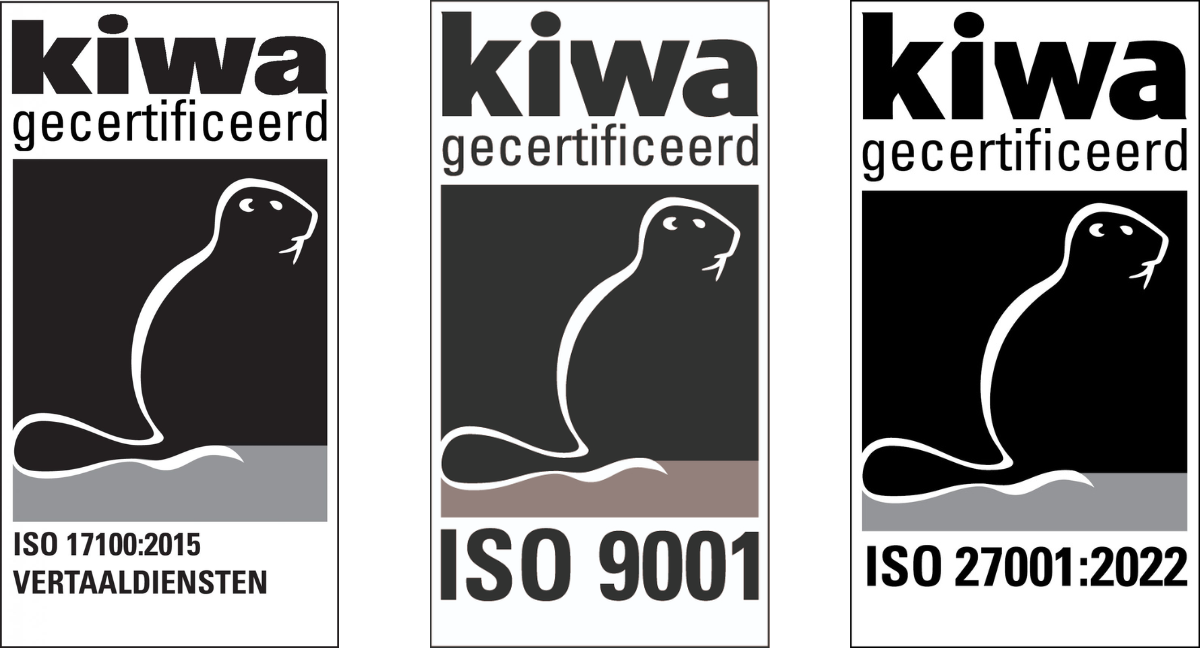Blog
- Information directly from the translation industry
- Advice from experts
Translation is more than just replacing words
One of the biggest challenges in the translation process is choosing between translating exactly what the source text says and making sure the translation actually resonates with the target audience. Translators are generally expected to stay somewhat faithful to the original text when translating to the target language. This is an important rule of thumb, because taking too much liberty with the content can have serious consequences for the user of the translated text. Think of legal documents or complex technical manuals, where a translator’s free interpretation of a statute or chemical formula could have dire consequences for the end user.
At the same time, a rigid, literal translation can also lead to less-than-ideal results. A faithful rendering of a phrase like “I’m under the weather” is likely to raise eyebrows with an Italian reader.
Of course, a professional linguist who stays true to the source will immediately recognize that a literal translation is nonsense. But what do you do when translating a simple phrase like “I like you” into Japanese? The translator needs to know the speaker’s gender, their relationship to the person being addressed, and ideally the person’s name, to avoid using an impolite form of “you.” A good translator takes all of these subtle, contextual elements into account when translating something that seems straightforward on the surface. In short, a skilled translator not only masters the mechanics of the work but also knows how to ask the right questions ahead of time in order to make sure the final version is linguistically and contextually appropriate.
… And what about AI?
For machine translation, things that a human intuitively grasps and intellectually processes aren’t always obvious. AI needs to be “fed” with answers to subtle questions about who is speaking, what the context is, and where the conversation takes place. For a user looking for a quick fix, that’s not only inefficient but it’s also impractical. The ability to balance faithfulness to the source with human understanding of context and intent makes the human role essential for an accurate, high-quality translation. Professional translators also check and maintain consistency and precision for repeat assignments by building client-specific translation memory and developing a feel for the desired communication style.
… but we can make sense of it with AI too
When perfection isn’t absolutely necessary and a client still opts for AI translation, we can play an effective corrective role. We have professional translators post-edit the AI-generated version. That means comparing the machine translation to the original source text and correcting for context, logic, tone, grammar, and spelling. The results can be pretty solid, and delivered faster and more affordably than a human-only translation.
If even that level of refinement isn’t needed, there’s always the option of a machine translation with proofreading only. With this, a native-speaking proofreader — sometimes called an editor in this case — reviews the machine-translated content for grammar, spelling, and flow, but without referencing the original text. That means faithfulness to the source isn’t guaranteed. You get a more average-quality result perhaps, but it’s quick and cost-effective. This is another service we offer at Translation Kings, especially when the translation isn’t considered “business critical.”
… and if it absolutely can’t cost a thing?
Some clients choose to generate the machine translation themselves and then have a willing colleague proofread it. Naturally, we consider this the least desirable option. Beyond the obvious reasons, we often try to explain to clients that having an in-house employee proofread a machine translation isn’t efficient. The time a non-professional spends on that kind of task usually doesn’t hold up against what a trained proofreader can do. No matter how fluent or native-sounding the colleague may be, experience, translation memory, and methodology ensure speed, accuracy, and ultimately, better results. Plus, that colleague wasn’t hired to spend hours, days, or even weeks correcting a machine translation. Their time is better spent on the tasks they were actually hired and paid to do. If you compare the lost time and revenue from taking them off their core duties with the cost of a professional proofreader, the math is almost always in favor of outsourcing.
No matter how cheap an in-house “fix” may seem, and however you look at it: outsourcing the job to a real linguist gets you better results, faster turnaround, and is more cost-effective in the long run.

Translation Agency complies with the highest attainable certifications: ISO 9001:2015, ISO 17100:2015, and ISO 27001:2022. Top quality, security and service remain our number one priority.


Translation Agency is a member of the VViN and EUATC; Organisations of translation agencies that work together to optimise quality and service.
